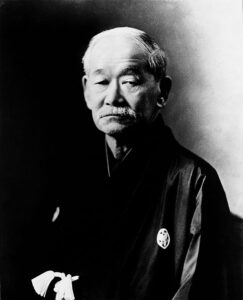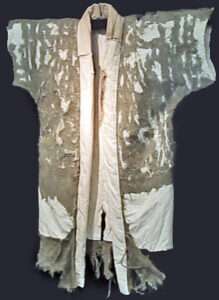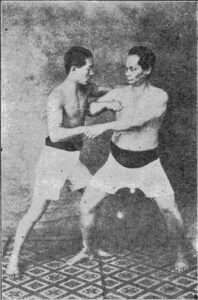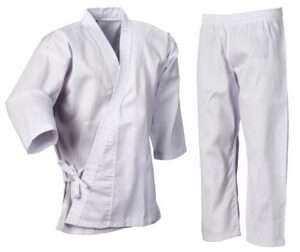
The development of the judogi can be attributed to Grandmaster Jigoro Kano, the founder of judo, during the late 1800s. Kano aimed to create a durable training uniform capable of withstanding the demands of grappling techniques. Drawing inspiration from the robust attire worn by Japanese firefighters of that era, who relied on heavy hemp jackets and pants for their strength and flame-retardant properties, Kano set out to design the judogi.

The judogi, primarily tailored for gripping and throwing techniques, is notably thicker and heavier compared to uniforms used in other martial arts. Its construction emphasizes durability, enabling practitioners to engage in intense grappling without compromising the garment’s integrity. Kano introduced modifications to the traditional Japanese kimono, ensuring that the judogi was more resilient and provided a looser fit. These design adjustments allowed for necessary anchorage and freedom of movement during judo practice. The judogi comprises three main components: the Uwagi (coat or jacket), Shitabaki (pants), and Obi (belt).

In contrast, the early stages of karate did not involve formal uniforms, and practitioners trained in their everyday clothing. However, as karate gained recognition and expanded, the need for standardized attire became evident. Gichin Funakoshi, a key figure in modern karate, sought to make martial arts more marketable and formalized. Inspired by Jigoro Kano and the significance of a distinct training uniform demonstrated by the judogi, Funakoshi embarked on the development of a unique karate uniform.
Initially, karate practitioners utilized judogi during training sessions. Funakoshi, closely associated with Kano, often showcased karate techniques while wearing a white judogi at the Kodokan. However, it soon became apparent that the judogi’s design did not fully cater to the specific movements and requirements of karate.
Consequently, a specialized uniform known as the karategi was introduced. The karategi aimed to maximize mobility, agility, and speed, all of which were essential for executing karate’s striking and kicking techniques. This uniform featured a lighter cloth that allowed unrestricted movement, typically made of smooth cotton with brushed or ribbed textures for added comfort. Reinforced stitching became a common feature, ensuring the gi’s durability during demanding training sessions.

The word “gi” translates to “clothing” in Japanese. The term “karategi” combines “karate” and “gi,” signifying the purpose of the uniform in karate practice. Additionally, “keikogi” combines “Keiko” (training) and “gi,” representing a training gi. “Dogi” is a widely used term that combines “do” from “Karate-do” with “gi,” symbolizing the integration of the martial arts’ philosophical aspects into the uniform itself.
In conclusion, the karategi and judogi have evolved from their humble beginnings to become iconic symbols of karate and judo, respectively. They embody the dedication, discipline, and values held within these martial arts. While the judogi draws inspiration from the sturdy clothing worn by Japanese firefighters, the karategi has been specifically designed to optimize mobility and speed, facilitating the execution of karate’s unique techniques. These uniforms reflect the rich history and ongoing development of martial arts, acting as a link between tradition and progress within their respective disciplines.
It’s worth noting that in modern times, variations and modifications exist in karate uniforms. In hot climates, certain practitioners may choose lightweight materials to improve comfort and breathability. Additionally, certain martial arts schools or organizations may have their own customized uniform designs, incorporating patches, logos, or other personalized elements to represent their specific identity.
Thanks for reading.
Gert
